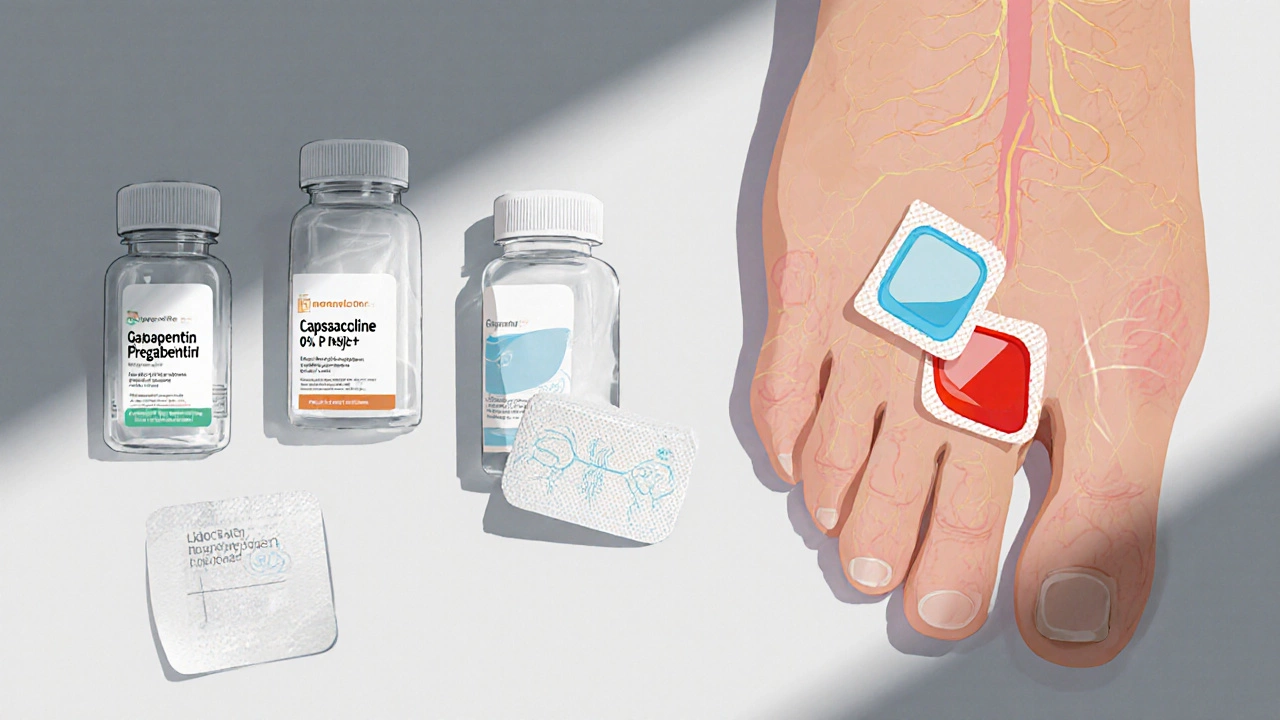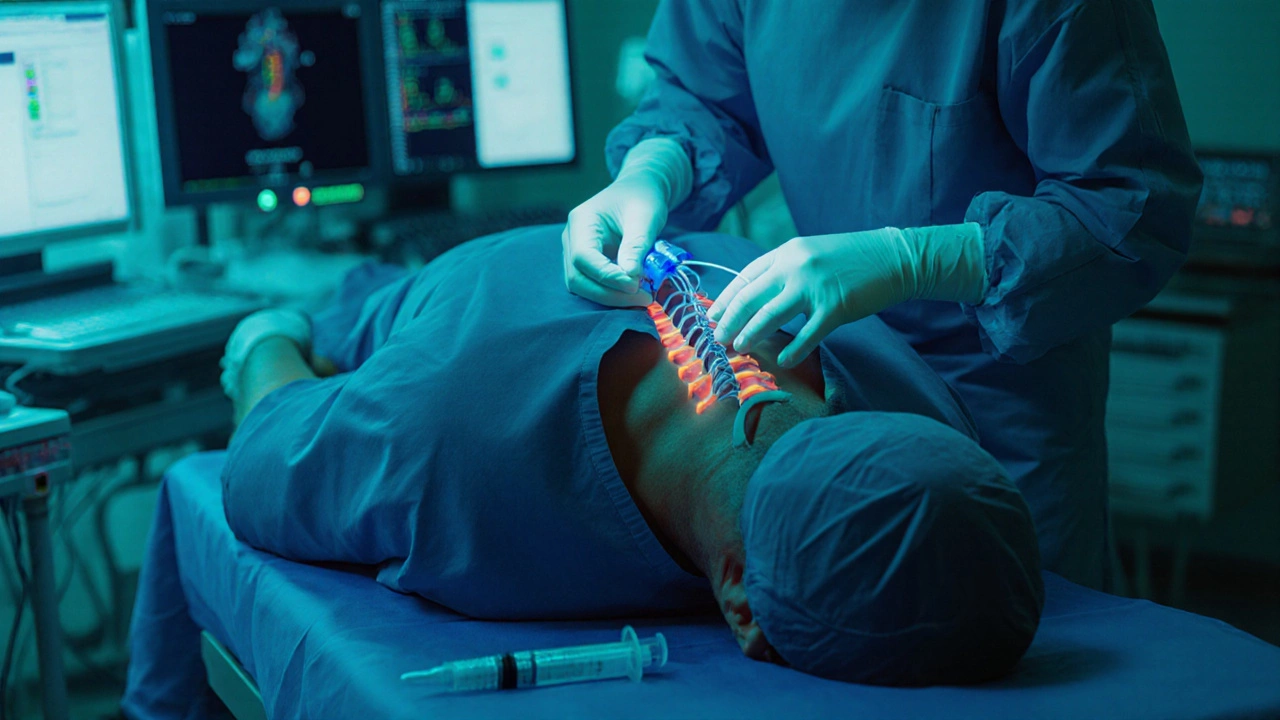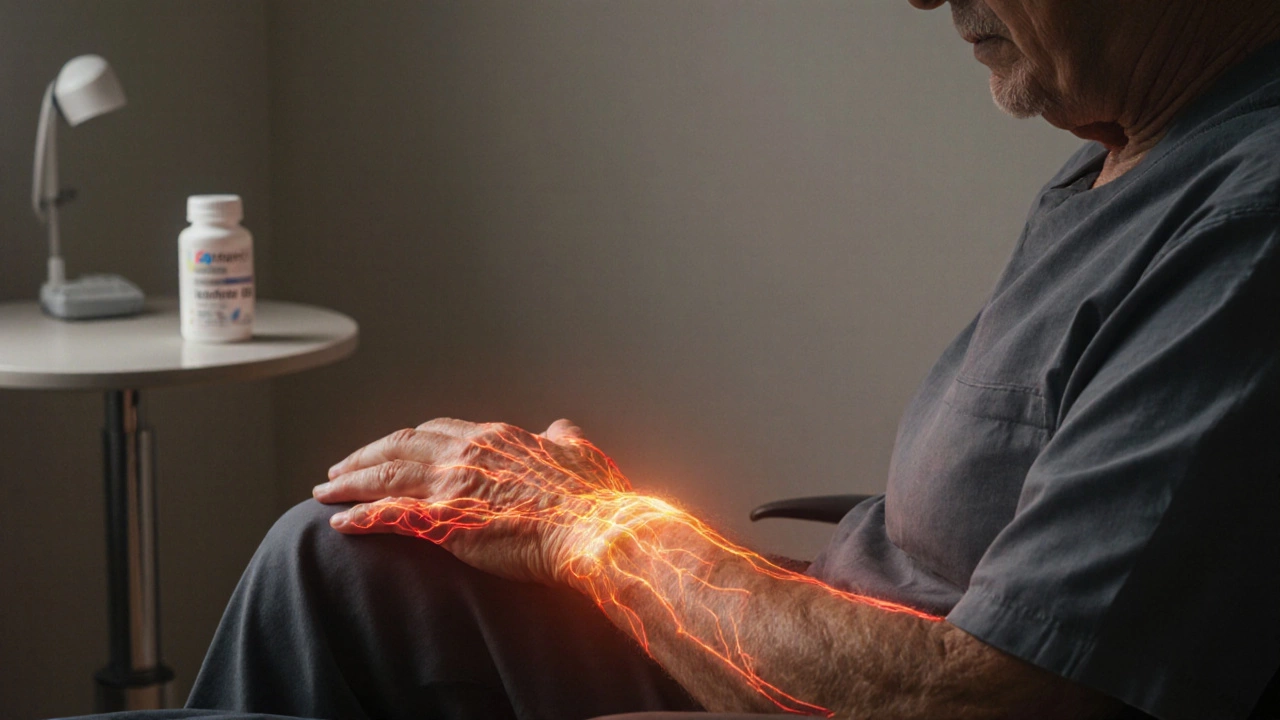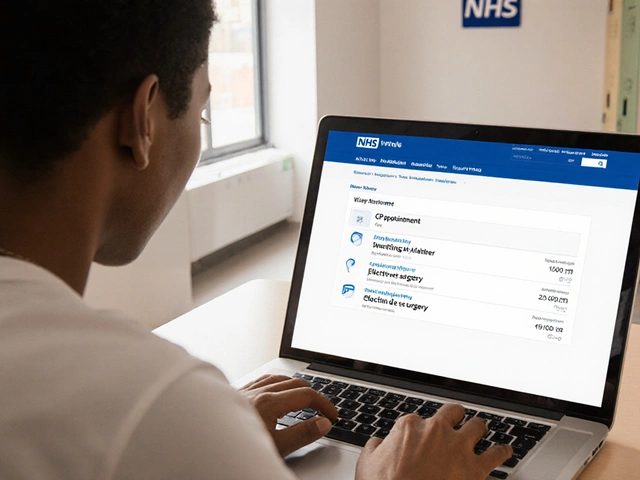Nerve Pain Relief Estimator
Estimate Your Pain Relief
Calculate expected pain reduction based on your condition and treatment options
Quick Takeaways
- First‑line oral meds like gabapentin and pregabalin provide the most consistent relief for many patients.
- Topical agents (capsaicin 8% patches, lidocaine 5% patches) are powerful for localized nerve pain with fewer systemic side effects.
- When medicines fail, interventional options such as spinal cord stimulation or peripheral nerve blocks can offer dramatic pain reduction.
- Opioids should be a last resort; they may help short‑term but carry high risk of tolerance and dependence.
- Combining pharmacologic therapy with physical therapy, CBT, and lifestyle tweaks gives the best overall outcome.
Nerve pain-also called neuropathic pain is pain caused by damage or disease affecting the peripheral or central nervous system-feels burning, tingling, or electric‑shock‑like. It shows up in diabetes, shingles, chemotherapy, or a pinched nerve. Because the pain originates from the nerves themselves, regular painkillers such as ibuprofen often miss the mark. So what’s the strongest pain relief for nerve pain? Below we break down the most potent options, how they work, and when to consider each.
First‑Line Oral Medications
Clinical guidelines from the American Academy of Neurology and the International Association for the Study of Pain consistently rank three drug classes as the backbone of neuropathic pain management.
Gabapentin is an anticonvulsant that binds to the α2δ subunit of voltage‑gated calcium channels, dampening abnormal nerve firing. Typical starting doses are 300mg three times daily, titrated up to 1800mg three times daily. Most patients notice a 30‑40% pain drop within one to two weeks. Common side effects include dizziness, dry mouth, and mild swelling.
Pregabalin is a newer calcium‑channel modulator, more potent than gabapentin on a milligram‑per‑milligram basis. Starting at 75mg twice daily, many clinicians aim for 300‑600mg daily. Studies show a 40‑50% reduction in pain scores for diabetic neuropathy, often within 5‑7 days. Side effects mirror gabapentin but may include visual disturbances.
Amitriptyline is a tricyclic antidepressant that blocks reuptake of norepinephrine and serotonin, enhancing descending inhibitory pathways. Low doses (10‑25mg at bedtime) are usually enough for neuropathic pain, and the ceiling effect appears around 75mg. Benefits include improved sleep, but anticholinergic effects (dry mouth, constipation) can limit use in older adults.
Second‑Line Oral Options
If the first‑line trio doesn’t give satisfactory relief, doctors may add or switch to other agents.
Duloxetine is a serotonin‑norepinephrine reuptake inhibitor (SNRI) approved for chronic musculoskeletal pain and diabetic peripheral neuropathy. Starting at 30mg once daily, titrating to 60mg improves both mood and pain. Its dual action makes it a good pick when depression co‑exists with nerve pain.
Other anticonvulsants such as carbamazepine (useful for trigeminal neuralgia) and oxcarbazepine can be strong contenders, but they require careful blood‑level monitoring.

Topical Therapies for Localized Pain
When pain is confined to a small area-like a post‑herpetic scar or a meralgia paresthetica-topical agents can deliver high concentrations right where the nerves are, bypassing systemic side effects.
Capsaicin 8% patch is a high‑dose, prescription‑only patch that desensitizes TRPV1 receptors, halting the pain signal after a single 60‑minute application. Clinical trials report up to a 60% reduction in pain lasting 12 weeks. Initial burning is common, but it fades quickly.
Lidocaine 5% patch is a local anesthetic patch delivering 4% lidocaine to the skin, providing up to 12 hours of relief per patch. It’s especially helpful for post‑surgical neuropathy and diabetic foot pain. Side effects are limited to mild skin irritation.
When Oral and Topical Options Fail: Interventional Therapies
About 20‑30% of chronic nerve‑pain patients remain refractory after optimal pharmacologic therapy. For them, procedural options can be the strongest relief.
Spinal Cord Stimulation (SCS) is a minimally invasive implant that delivers low‑frequency electrical pulses to the dorsal columns, masking pain signals. Success rates in randomized trials hover around 70% for failed‑back‑surgery syndrome and complex regional pain syndrome. Patients typically report a 50% drop in pain intensity within three months.
Peripheral nerve blocks (e.g., stellate ganglion block for upper‑extremity neuropathy) and pulsed radiofrequency ablation are other options that can yield weeks to months of relief without permanent implants.
Opioids: The Controversial Heavyweight
Strong opioids such as morphine, oxycodone, or methadone can blunt nerve pain, but the relief is often short‑lived and comes with high risk. A 2023 meta‑analysis showed that only 15% of chronic neuropathic pain patients achieve >50% pain reduction on long‑term opioid therapy, while 40% develop tolerance or dependence.
Guidelines advise using opioids only when all other modalities have been exhausted, and even then, the dose should stay below 50 morphine‑equivalent milligrams per day, with regular reassessment.

Putting It All Together: A Practical Decision Tree
- Start with gabapentin or pregabalin (or both) plus low‑dose amitriptyline if sleep is poor.
- If pain stays >4/10 after 4‑6 weeks, add duloxetine or switch to the stronger agent (pregabalin > gabapentin).
- For focal pain, layer a capsaicin 8% patch or lidocaine 5% patch on top of oral meds.
- When oral+topical combos still leave pain >5/10, refer to a pain specialist for SCS or nerve block evaluation.
- Reserve short‑term opioids for breakthrough pain only, with strict monitoring.
Key Lifestyle Tweaks That Boost Medication Effectiveness
- Exercise: Gentle aerobic activity improves circulation to nerves and can lower pain scores by 10‑15%.
- Blood‑Sugar Control: For diabetic neuropathy, every 1% drop in HbA1c correlates with a 5% pain reduction.
- Vitamin B12: Deficiency worsens neuropathy; supplementing 1000µg daily can improve symptoms in up to 30% of patients.
- Mind‑Body Therapy: CBT and mindfulness reduce the emotional amplification of nerve pain, often allowing lower drug doses.
Frequently Asked Questions
Which medication works fastest for nerve pain?
Pregabalin often shows a measurable drop in pain within 5‑7 days, while gabapentin may take 1‑2 weeks. Topical capsaicin can give relief after a single 60‑minute patch.
Are there non‑drug options that are as strong as medications?
Spinal cord stimulation and peripheral nerve blocks can provide pain reductions comparable to high‑dose drugs, especially for patients who cannot tolerate systemic side effects.
Can I combine gabapentin with opioids safely?
Combination is possible but must be overseen by a physician because both can cause sedation and respiratory depression. The goal is to keep opioid doses low.
What are the biggest risks of long‑term spinal cord stimulation?
Infection at the implant site (2‑5% of cases), lead migration, and battery depletion requiring replacement surgery are the main concerns. Overall, the risk profile is lower than chronic opioid therapy.
Is cannabis or CBD effective for nerve pain?
Evidence is mixed. High‑THC extracts have shown modest (10‑20%) pain relief in small trials, while CBD alone lacks strong data. Legal status and product quality vary by region, so discuss with a clinician.
How long should I try a medication before deciding it’s not working?
Give each drug at least 4‑6 weeks at a therapeutic dose. If pain reduction stays below 30% after that period, consider switching or adding another class.
Next Steps for Readers
1. Schedule a visit with your primary care doctor or a pain specialist to discuss your current pain score and medication history.
2. Ask for a trial of gabapentin or pregabalin if you haven’t tried them yet. Request a clear titration plan.
3. If your pain is localized, ask about a capsaicin 8% or lidocaine 5% patch prescription.
4. Should oral agents fall short, request a referral for an interventional assessment (nerve block or spinal cord stimulation).
5. Keep a pain diary: note medication timing, dose, side effects, and daily pain levels. This data helps your clinician fine‑tune treatment.
Remember, the “strongest” relief isn’t a single pill-it’s a tailored mix of drugs, procedures, and lifestyle changes that together knock the pain down to a manageable level.





